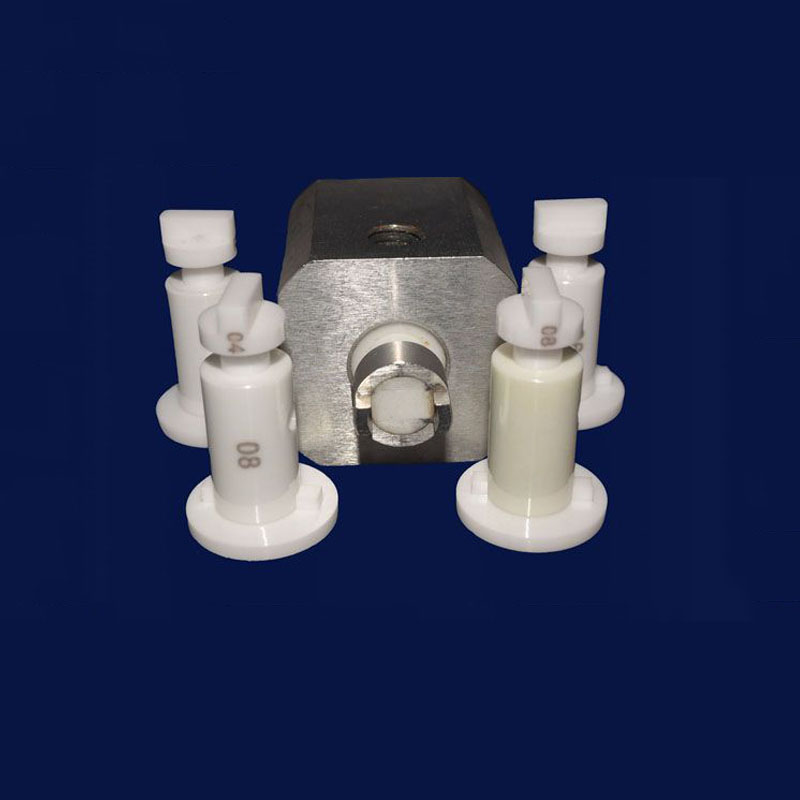Factors affecting wear resistance of ceramics
Time: 2019-01-29 Writer: mingrui
Factors affecting wear resistance of ceramics

Wear-resisting ceramic materials are widely used in grinding and polishing materials, wear-resisting coating, pipe or equipment lining, equipment structure parts and other fields, its wear-resisting performance directly determines the safety of mechanical equipment and parts of the service life.Common wear-resistant ceramic materials are zirconia, alumina, cubic boron nitride, silicon nitride, boron carbide, silicon carbide, and so on.
In order to obtain ceramic materials with better wear resistance, many scholars have studied the wear mechanism of ceramic materials and the factors affecting the wear resistance of ceramics, and put forward many opinions and conclusions.In general, there are two factors affecting the abrasion resistance of ceramics:
1. The organizational structure of the material itself;
2. External factors such as load, temperature and atmosphere, etc.
一、influence of mechanical properties on wear resistance of ceramics
In the early research on the wear resistance of ceramic materials, it was believed that the hardness of ceramic materials had a great relationship with the wear resistance. Later, it was found that the relationship between the hardness and wear was not so obvious. For example, the hardness of alumina ceramics was higher than TZP zirconia ceramics, but the wear resistance was not necessarily higher than TZP ceramics.
Although hardness can reflect the bonding strength of grain boundary to a certain extent, wear is finally formed by the material breaking away from the worn surface, so the hardness of ceramic material is no longer used as a predictive index to measure wear.It has also been reported that the brittleness of ceramic materials directly affects the wear rate.Studies have shown that with the increase of fracture toughness and hardness of materials, the wear rate of ceramics decreases gradually and the wear resistance is better.
二、The influence of microstructure of ceramics on wear resistance.
Generally, the microstructure of materials often has a great influence on the macroscopic properties of materials.Ceramic material is a sintered body composed of grain and intergranular.Many studies have shown that the wear resistance of ceramic materials is closely related to grain size, grain boundary phase composition, stress distribution on grain boundary, porosity and other microstructures.
1. Influence of grain size on wear resistance of ceramics
In industry, metal materials can improve their mechanical properties by refining grain, which is called fine grain strengthening.The principle is that the smaller the grain size is, the larger the grain boundary area will be, and the more tortuous the grain boundary distribution will be, which can effectively increase the crack growth path, and is conducive to the stress concentration phenomenon inside the dispersed material.It has been found that the grain refinement has a certain effect on the wear resistance of ceramic materials.
In the study of wear resistance of alumina and zirconia wear-resistant ceramics, it was found that the smaller grains were mainly plastic deformation and part of the transgranular fracture, with less wear.The larger grain will break along the grain or even pull out from the material.However, the pull-out of large size grains will cause large defects on the surface of ceramics, making the material easy to cause stress concentration, crack propagation, and low stress brittle fracture of the material.
2. Influence of porosity on wear resistance of ceramics
Porosity has a very important impact on the performance of ceramics. It is equivalent to the existence of a defect, which can cause stress concentration, accelerate crack growth, reduce the bonding strength between grains, and seriously affect the mechanical properties of ceramics.Under the action of friction force, the pores may connect with each other to form a crack source, accelerating the wear of the material.
In addition, it has been found that under different loads, the wear rate of ceramics is not the same.In the case of high load, the stomata becomes unstable, and cracks and propagation cracks will be formed in the stomata, resulting in extremely high wear rate of products and weak resistance to wear mutation.
3. Influence of intercrystalline phase and intercrystalline heterogeneity
Ceramic is composed of grain, grain boundary phase and porosity, etc. In the sintering process, some additives and impurities added to the ceramic mainly exist in the form of "second phase" or "glass phase" in the grain boundary, and their presence will have a certain impact on the bonding strength between grains.In the process of ceramic friction and wear, cracks are easily generated at the grain boundary.Low grain boundary bonding strength will cause intergranular fracture in the process of wear and tear, and cause the whole grain to be pulled out, resulting in severe wear and tear.
Polycrystalline ceramic additives generally exist in the form of glass phase on the ceramic grain boundary. In the process of friction, the high temperature will reduce the viscosity of the glass, thus causing plastic deformation.
If an appropriate amount of additives to the second phase at grain boundary, is helpful for material wear-resisting performance is often, for example, to add zirconium oxide, alumina make zirconia toughening alumina ceramics and ZTA ceramic, due to the t - ZrO2 stress induced phase transition critical stress increase is helpful for the improvement of the ceramic material fracture toughness and strength, in terms of microstructure, zirconia and alumina can inhibit grain growth each other again, achieve the micro crystallization effect.Further improve wear resistance.

 Moble: +86 18122974730
Moble: +86 18122974730 Phone: +86 746 3386888
Phone: +86 746 3386888 Email: admin@cerampart.com
Email: admin@cerampart.com Skype: +86 18122974730
Skype: +86 18122974730 Wechat: +86 18122974730
Wechat: +86 18122974730